What is Vegan Dashi?
Kombu and shiitake mushroom dashi is a Japanese-style soup stock that contains only plant-based ingredients.
While most of the mainstream dashi is made using fish products such as dried bonito flakes, using plant ingredients like kombu and shiitake dashi is also recommended as it provides a deep flavor that is equal in umami.
It may come as a surprise, but plant-based meals have a long-standing history in Japanese culture. Meals made of vegetables, tofu, and other plant-based ingredients are termed “Shojin-ryori (精進料理),” which was originally a meal for Buddhist monks who followed the Buddhist precepts.
Today, some families still prepare these meals as an offering for the Obon festival.
It may be interesting to know that Japan had an official ban on eating meat up until about 150 years ago when the ban was lifted in 1871. However, being an island nation, fish has always been a popular food choice in Japan.
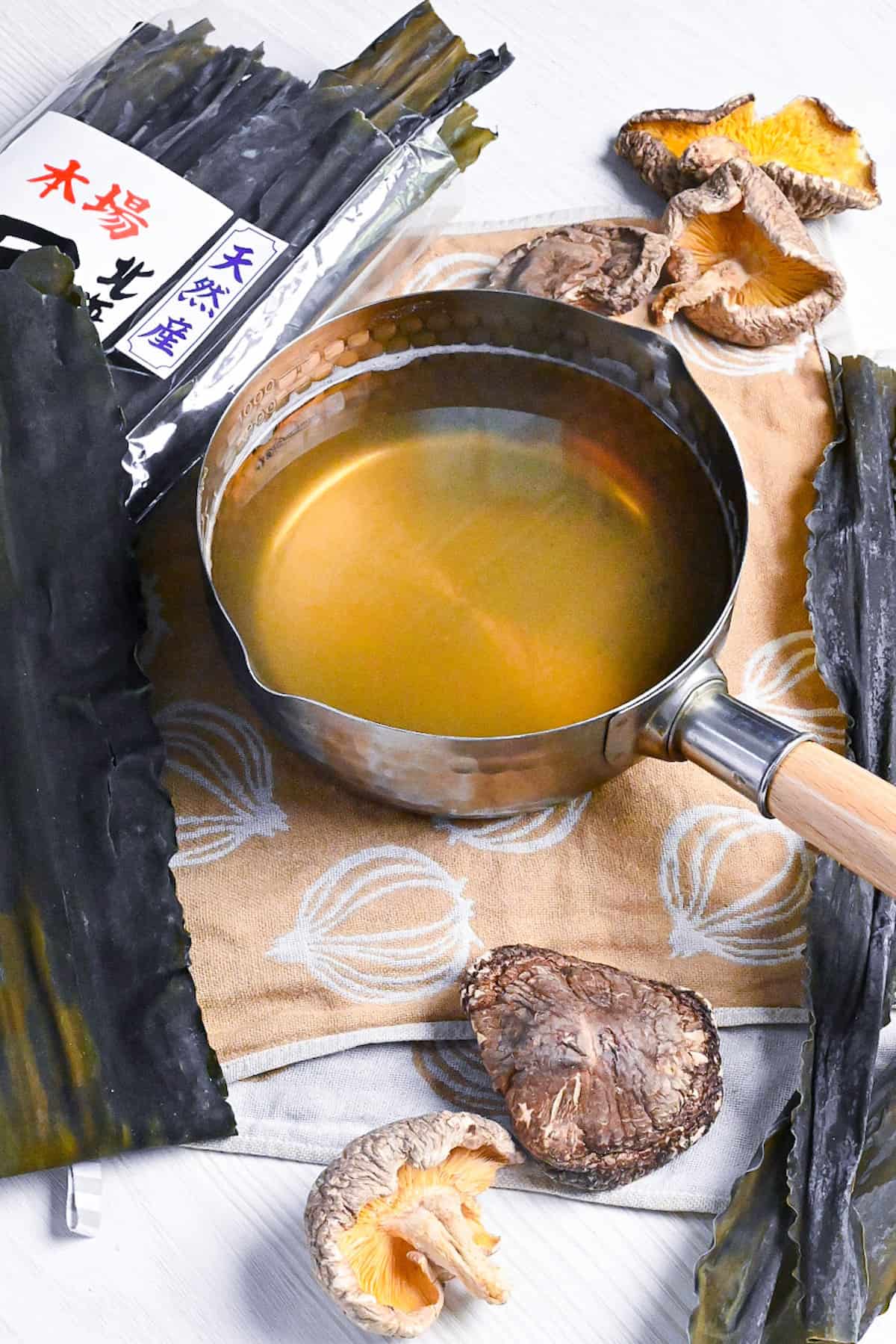
Umami Secrets of This Dashi
Umami (旨味) is a Japanese term that simply refers to a delicious taste with depth. Although dashi has been around for a long time, there’s a scientific explanation behind it.
The umami flavor of kombu (dried kelp) comes from the amino acids: glutamic acid and aspartic acid, and glutamic acid is the primary source of this flavor.
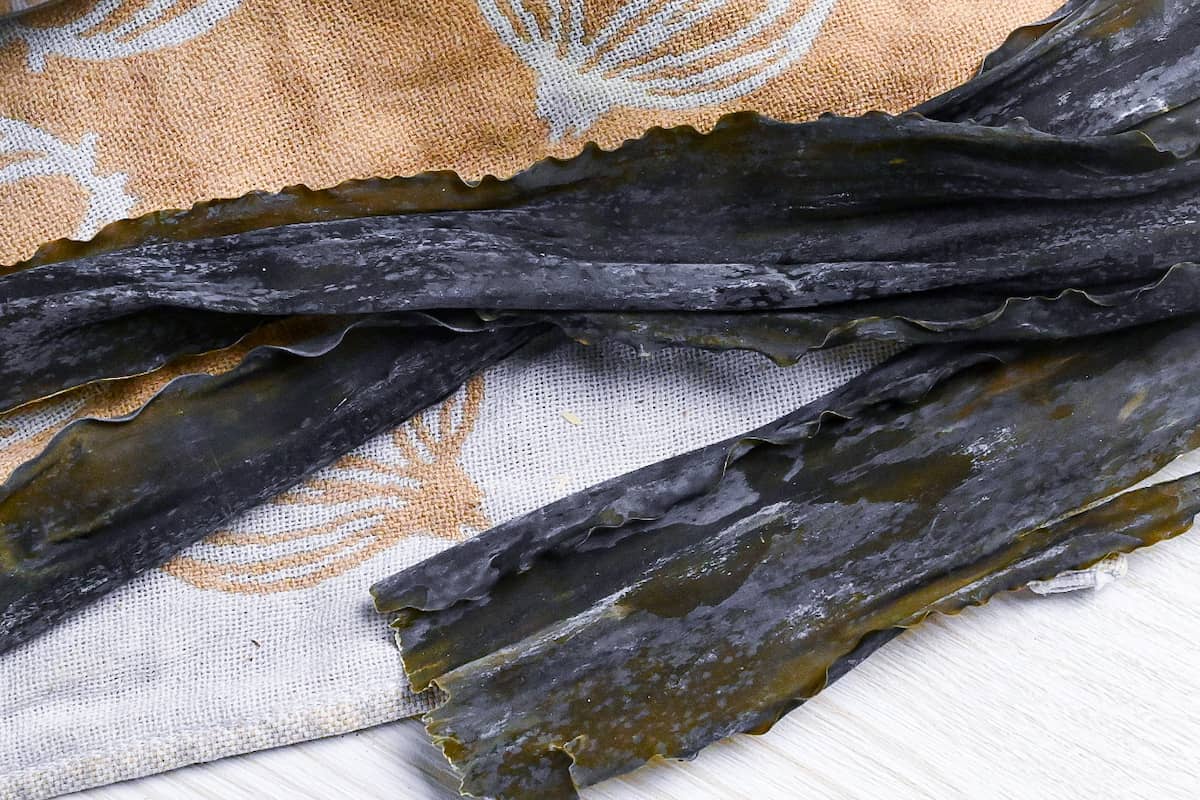
In 1908, Professor Ikeda of Tokyo Imperial University extracted glutamic acid from kelp and named the taste “umami.” Therefore, kelp was where the word “umami” was first used in the world.
On the other hand, shiitake mushrooms have a flavor component called guanyl acid.
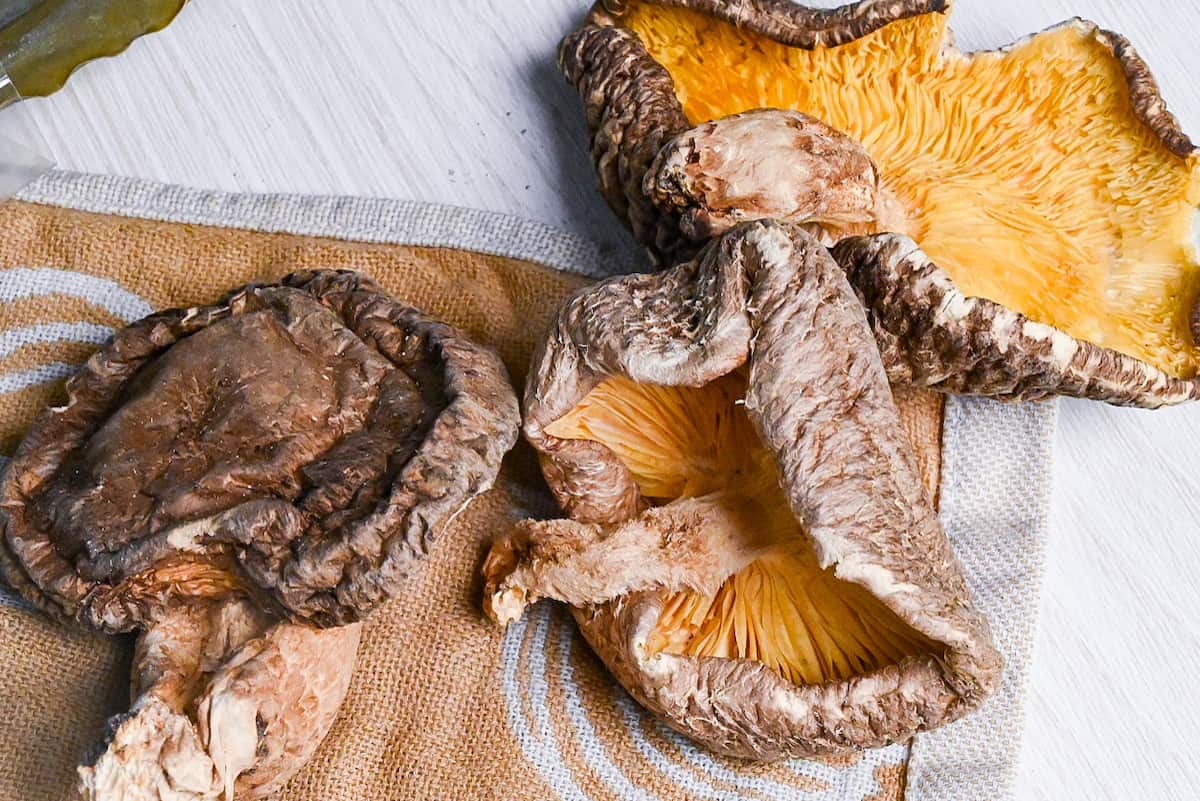
Interestingly, fresh and dried shiitake mushrooms contain different amounts of guanylic acid, which is why dried shiitake mushrooms are used in dashi stock. When shiitake mushrooms are dried, their cells are destroyed and ribonucleic acid is broken down by enzymes, resulting in an increase in guanylic acid.
To sum it up, this plant-based dashi uses a combination of deep glutamic acid and guanylic acid to create a rich umami flavor.
Ingredients You Will Need
- Cold Water: When it comes to Japanese cuisine, especially dashi, soft water with a hardness of 0 to 30 is the way to go. Soft water is the secret to drawing out that rich umami flavor from the kelp. But be cautious with hard water; it can react with the kelp’s protein, turning all that umami goodness into scum.
- Dried Kelp (Kombu): There are four popular kelp types for dashi: Rausu, Rishiri, Ma, and Hidaka. Each has its unique characteristics. If you’re keen on diving deeper into the world of kelp, Kelp 101 article is a must-read.
- Dried Shiitake Mushrooms: There are various sizes to choose from, but stick to the unsliced ones for this recipe. See dried shiitake 101 for more details.
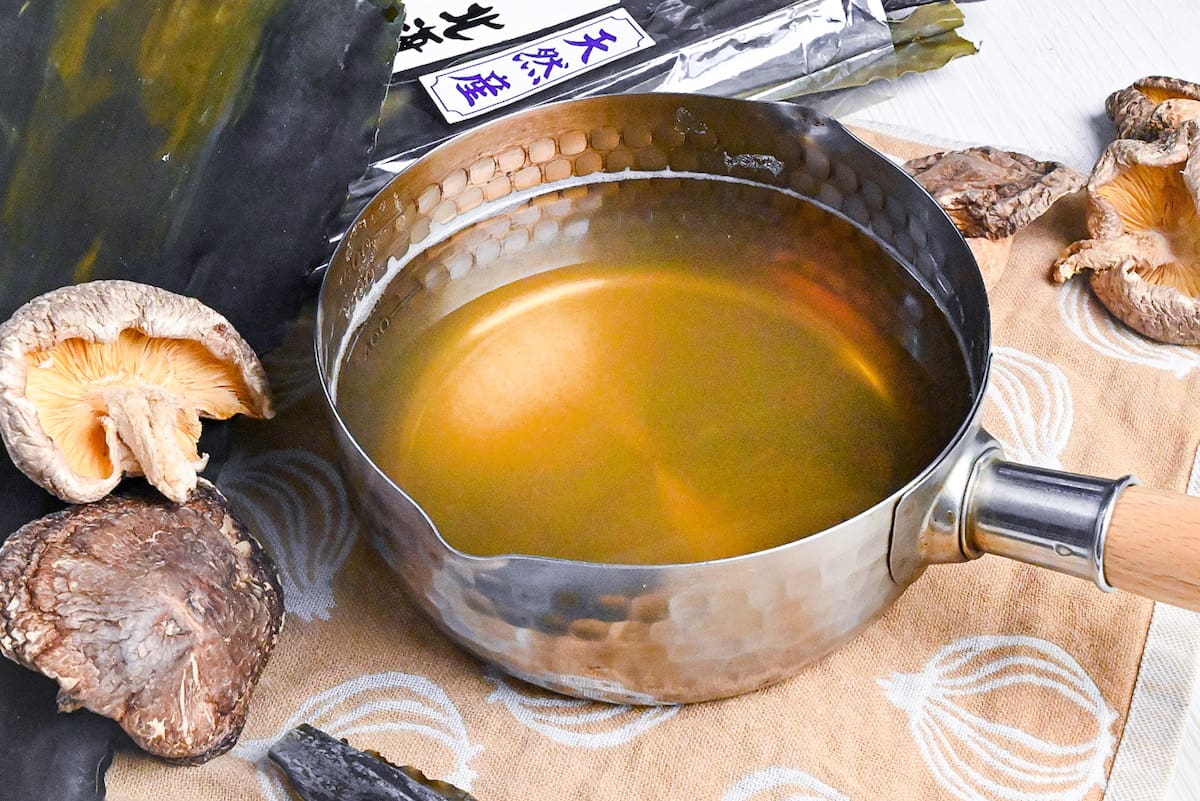
Visual Walkthrough & Tips
Here are my step-by-step instructions for how to make Plant-based Dashi at home. For ingredient quantities and simplified instructions, scroll down for the Printable Recipe Card below.
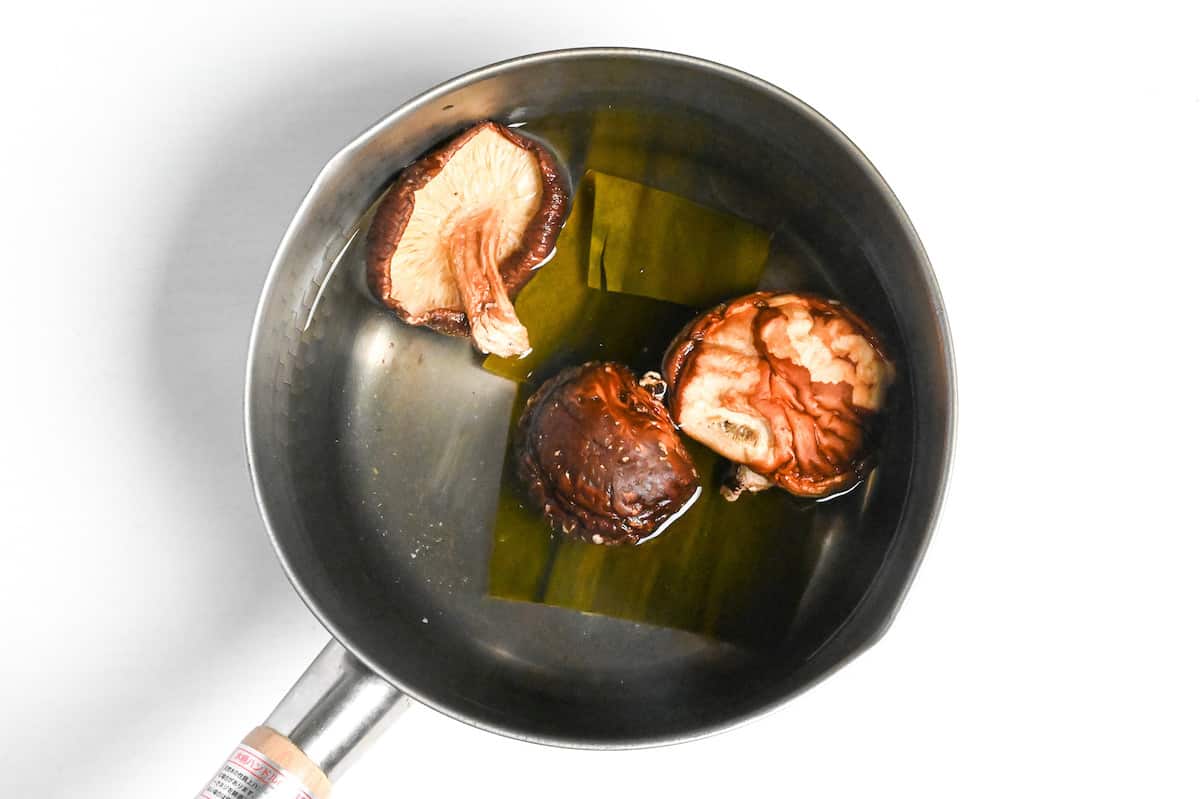
Combine cold water, dried kelp (Kombu), and dried shiitake mushrooms in a pot.
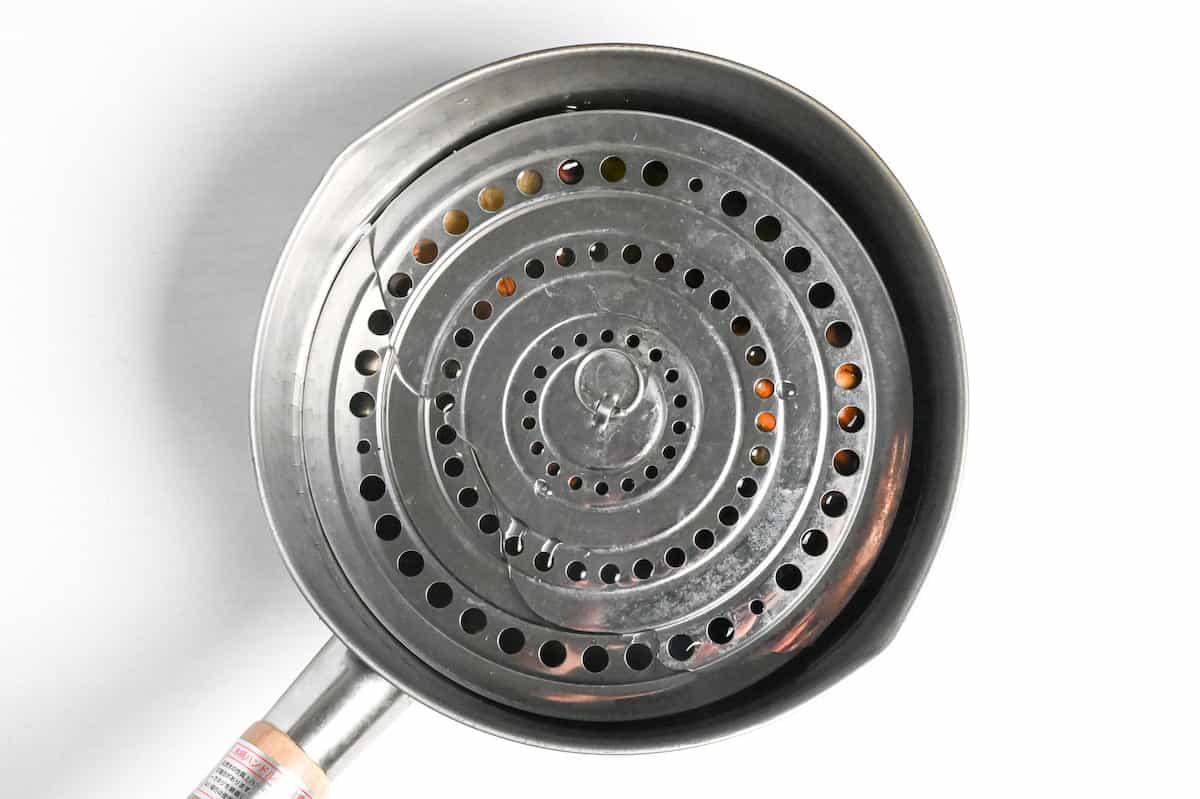
Those shiitake mushrooms tend to float, so consider using a drop lid or similar to ensure they’re completely submerged, allowing their delicious flavor to be fully extracted.
Cover the pot let these ingredients mingle, and soak.
For both kombu and dried shiitake mushrooms, I strongly suggest soaking them overnight if possible.
However, if you are pressed for time, you can still soak them until they become softened, which usually takes about 30 minutes.
While the flavor may not be as rich as it would be after being soaked overnight, it will still work well if you are in a hurry.

After the soaking session, remove the shiitake mushrooms. You can either discard them or chop them up for another dish if you’re like me and love finding ways to repurpose ingredients.
Place the pot over medium heat.
Just before the water boils, turn the heat down to low. Carefully remove the kombu (save it for another treat, like kombu rice balls).
Let the broth simmer for about 5 minutes.
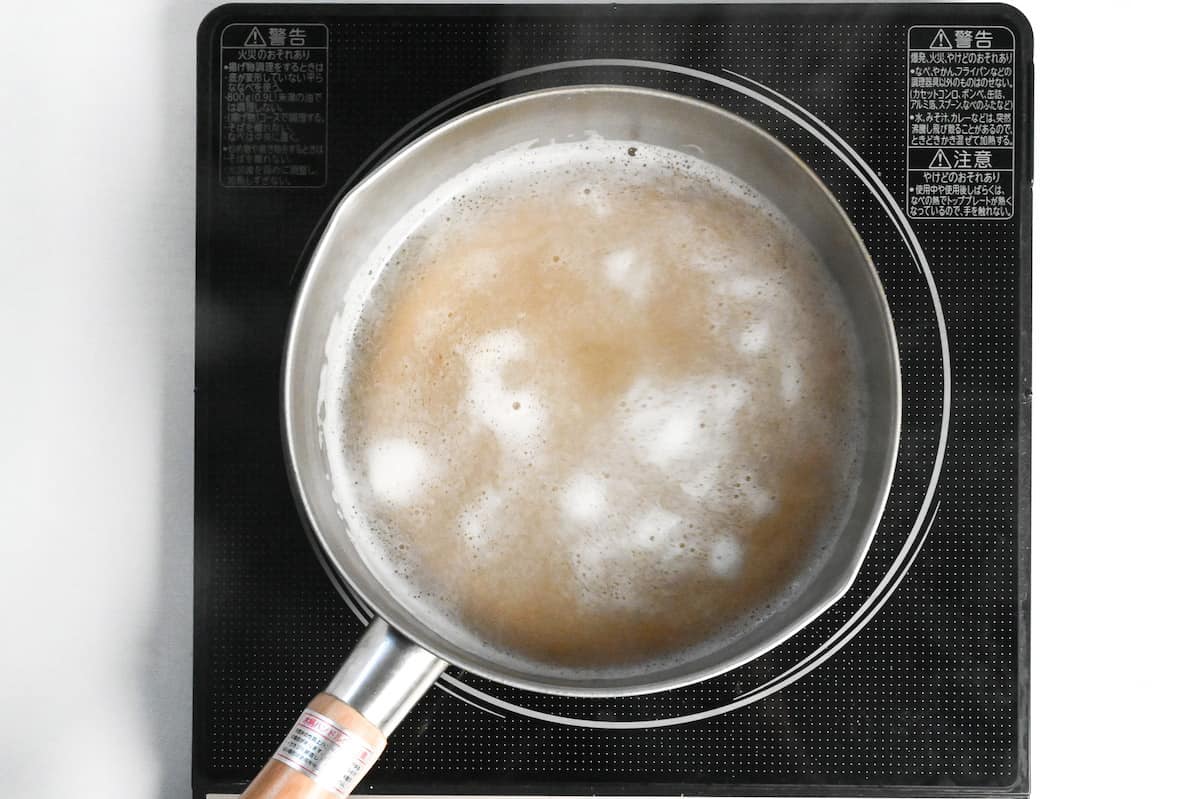
If you notice any foam forming on the surface, gently scoop it off.
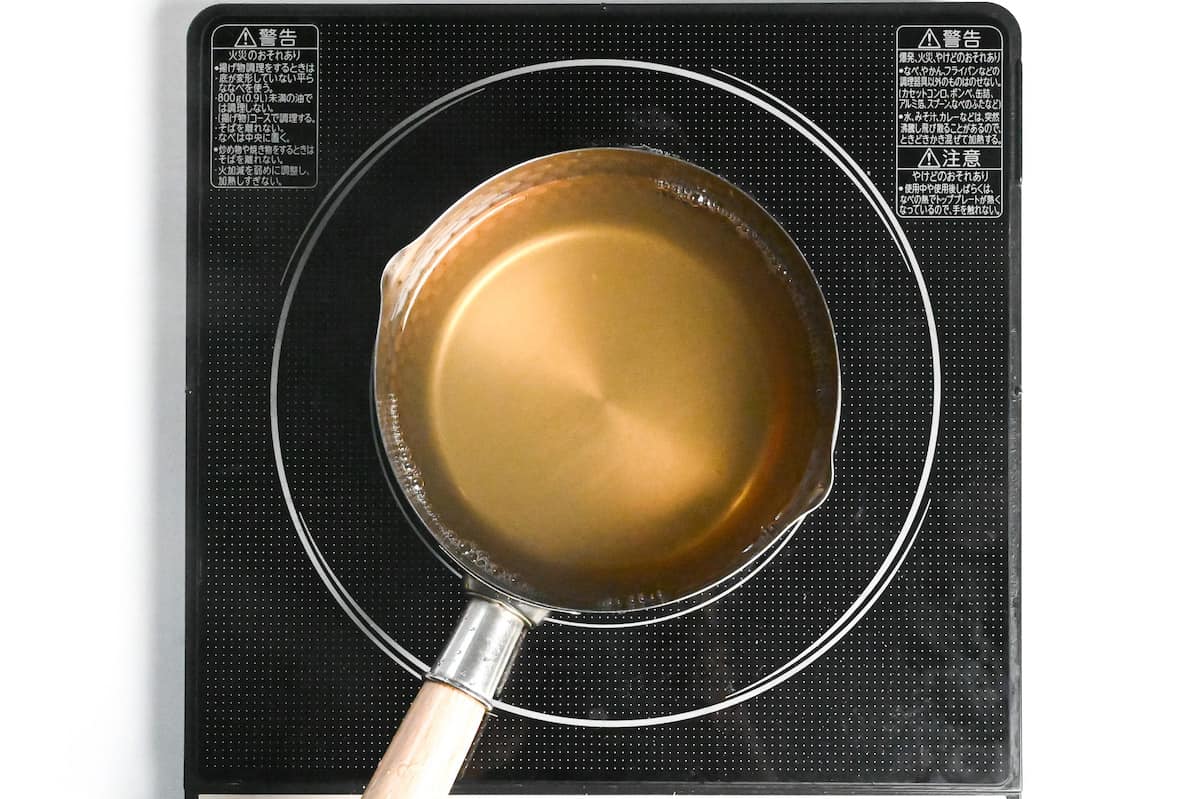
Once done, you can use the broth immediately or let it cool down and store it for later.
This broth is the heart of many Japanese dishes. Use it in soups, broths, or sauces to bring that authentic Japanese flavor to your table!
Jump to Full Recipe Measurements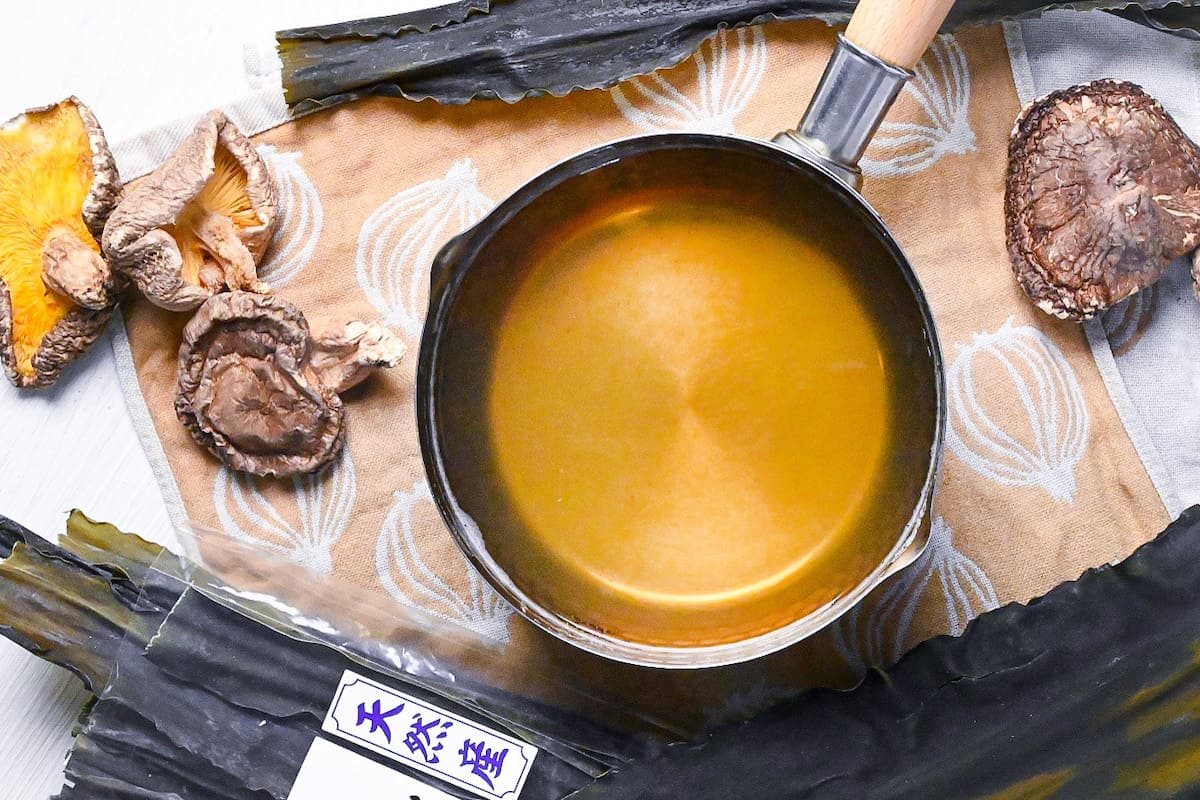
How to Store
Kombu and shiitake dashi, despite being made from dried ingredients, don’t store well and can deteriorate quickly.
For optimal taste, keep it in a sealed container in the fridge for up to 3-4 days.
If you need longer storage, freezing is the way to go. Pour the dashi into ice cube trays or individual portions and use freezer-safe bags or containers. This can last up to a month.
Storage summary
Room temperature – Not recommended.
Refrigerated – 3-4 days.
Frozen – Up to a month.
FAQ
Here are answers to frequently asked questions I have received across all platforms, including here, YouTube, and Pinterest. If you have any questions, feel free to send them to me anytime! It will be a big help for everyone in this community!
Dried shiitake mushrooms are required for making dashi. Although they are both the same mushrooms, we tend to think of them as completely different ingredients.
If you’re soaking the kombu and shiitake for 30 minutes like this recipe, you don’t need to refrigerate them. However, if you plan to soak them overnight for a stronger flavor or if you’re using a smaller amount of these ingredients, then yes, I would recommend storing them in the refrigerator.
I hope you enjoy this Vegan Dashi recipe! If you try it out, I’d really appreciate it if you could spare a moment to let me know what you thought by giving a review and star rating in the comments below. It’s also helpful to share any adjustments you made to the recipe with our other readers. Thank you!
More Plant-based Japanese Recipes
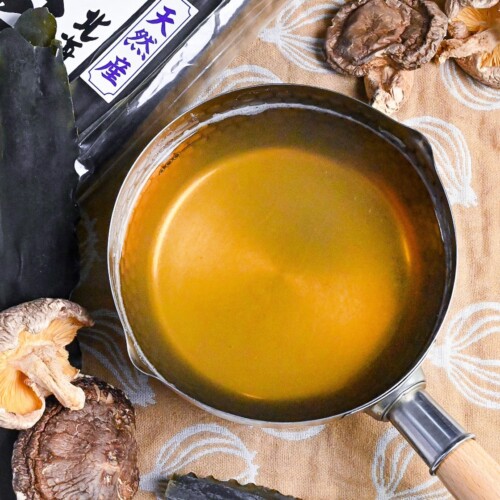
Vegan Dashi (Kombu and Shiitake Dashi Broth)
Ingredients
- 1000 ml cold water
- 10 g dried kelp (kombu) kombu
- 4 dried shiitake mushroom
My recommended brands of ingredients and seasonings can be found in my Japanese pantry guide.
Can’t find certain Japanese ingredients? See my substitution guide here.
Instructions
- In a pot, add 1000 ml cold water with 10 g dried kelp (kombu) and 4 dried shiitake mushroom.

- Optional: Since dried shiitake tend to float, I recommend using a drop lid to weigh them down so that they're properly submerged in the water.

- Put a lid on and leave to soak for at least 30 minutes. (preferably over night)

- Once the kombu and shiitake have softened and released their flavour, remove the shiitake and place the pot on a medium heat. (You can discard the shiitake or cut them up and incorporate them into your cooking if you don't want to waste them.)

- Once the water is almost boiling, reduce the heat to low and remove the kombu (you can discard or save it for another recipe such as kombu rice balls). Simmer for 5 minutes and scoop out any foam that forms on top.

- Remove from the heat and use immediately, or cool and store.

- Enjoy in Japanese soups, broths and sauces!
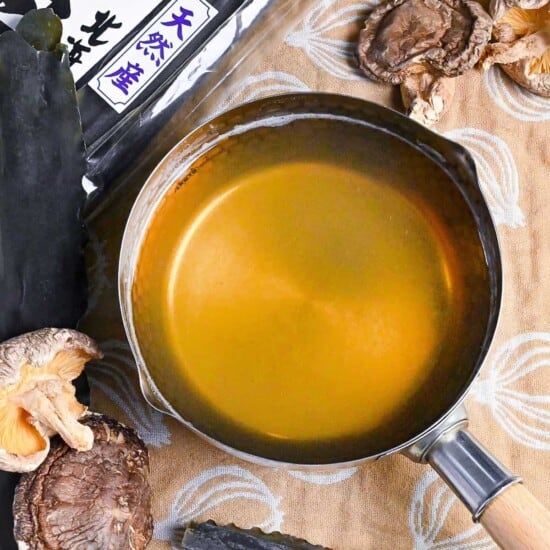


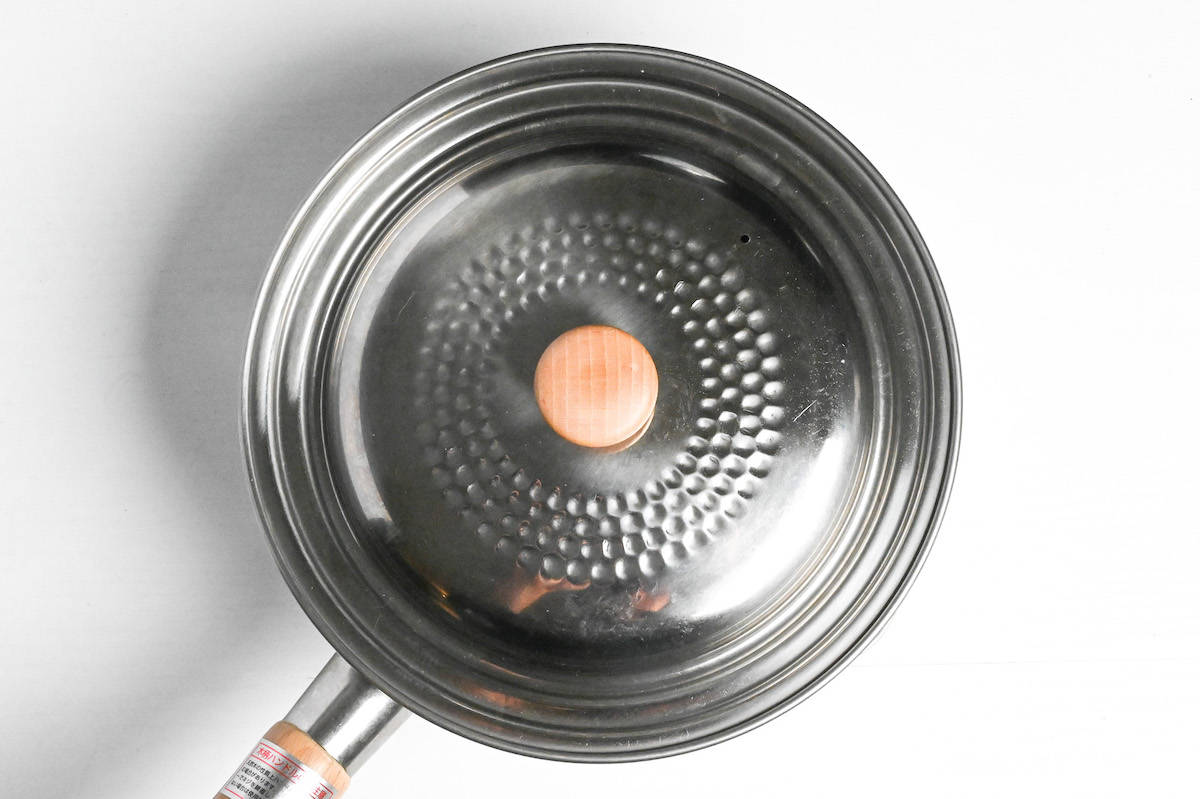
How long can you keep this dashi in the refrigerator? I’m a single person, going through a litre in a day might be a big ask.
Hi Tamara,
That’s a great question and I’ll update the post to let my other readers know. I recommend keeping this dashi in the fridge for no longer than 3-4 days, you could also pour it into an ice cube tray or divide it into portions in ziplock bags and keep it in the freezer for up to 1 month.
Thank you for getting in touch!
While the kombu and shiitake are soaking does it need to be refrigerated?
And, thank you for providing vegan options!
Hi Robin,
Thank you so much for your question! If you’re soaking the kombu and shiitake for 30 minutes like this recipe, you don’t need to refrigerate them. However, if you plan to soak them overnight for a stronger flavor or if you’re using a smaller amount of these ingredients, then yes, I would recommend storing them in the refrigerator. And you’re very welcome for the vegan options – I’m happy you found them helpful!
Yuto